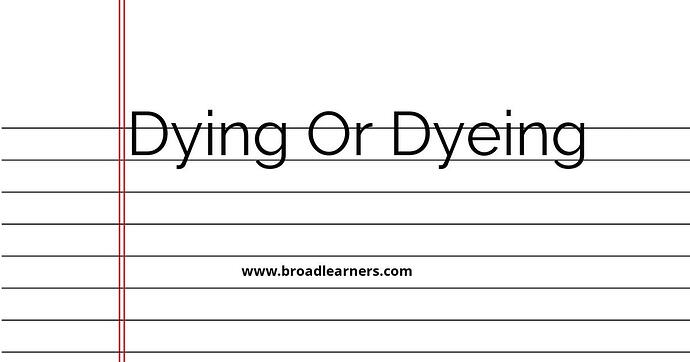'Dying' and 'dyeing' are commonly confused words in English grammar. Understanding the difference between 'dying' and 'dyeing' is important to use them correctly in written and spoken English.
'Dying' is the present participle of the verb 'die', which means to cease living or to become dead. It is used to describe the process of death or the state of being close to death.
'Dyeing' is the present participle of the verb 'dye', which means to color something using a dye or pigment. It is used to describe the process of adding color to an object or material.
Let's take a closer look at the meanings and usage of 'dying' and 'dyeing'.
| 'Dying' | 'Dyeing' |
|---|---|
| The word 'dying' is used to describe the process of death or the state of being close to death. | The word 'dyeing' is used to describe the process of adding color to an object or material. |
|
|
To remember the difference between 'dying' and 'dyeing', it can be helpful to remember that 'dying' is related to death and describes the process or state of being close to death, while 'dyeing' is related to coloring and describes the process of adding color to an object or material.
Here are some examples of correct usage:
- She is dying her hair blonde for the party. (describing the process of coloring hair)
- The dying leaves on the tree signaled the arrival of autumn. (describing the process of wilting or fading)
- He is dyeing the fabric red for the fashion show. (describing the process of adding color to fabric)
Remembering the correct usage of 'dying' and 'dyeing' will improve your grammar and communication skills.
